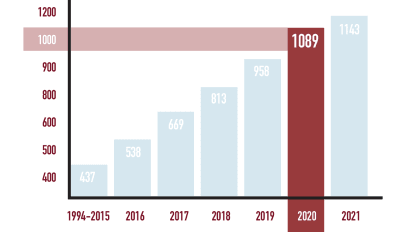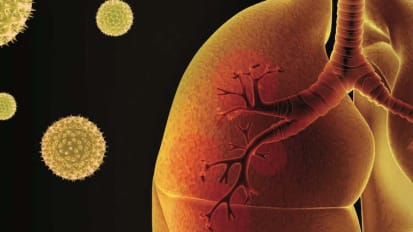Recently Added |View All
 News
News
Temple Lung Center | Enrolling Clinical Trials
The Temple Lung Center conducts one of the most comprehensive lung disease clinical trials programs in the country. Our advancements in basic, translational and clinical research are changing lung disease treatment. By pioneering effective ...
 Video
Video
A comprehensive overview of strategic clinical risk stratification, evidence-based approaches derived from clinical trials and advanced research, and essential insights into the follow-up care of patients post-pulmonary embolism (PE).
 Course
Course
2024 GOLD International COPD Conference
Join us on November 11th and 12th for the world’s largest educational symposium on chronic obstructive pulmonary disease (COPD). The upcoming 9th annual GOLD International COPD Conference is once again a two-day event hosted in Philadelphia, Pennsylvania.
 Course
Course
Pleural Effusions and Pleural Disease
Pleural disease is a common but frequently misunderstood clinical entity within the field of pulmonary disease. While up to 30% of individuals assessed may have pleural effusions, the specific diagnostic and therapeutic modalities undertaken ...
 News
News
Advanced Bronchoscopic Services
As the only integrated pulmonary and critical care medicine, sleep medicine, and thoracic surgery department in the nation, the highly experienced, multidisciplinary team at the Temple Lung Center is consistently setting new standards ...
 News
News
Presented by Temple cardiothoracic surgery and pulmonary faculty as a pre-conference activity at the January 2024 STS Annual Meeting, this symposium, “Surgical and Medical Insights for Transplant Assessment and Management” will provide ...
 News
News
Lung Transplant Program Referral Information
The Temple Lung Transplant Program is a leader in both quantity and quality. It’s the nation’s highest volume program, but it also has the best one-year survival rates in Philadelphia and all of Pennsylvania.
 News
News
Optimizing Treatment for CTD-ILD
When autoimmune or connective tissue diseases cause inflammation or scarring of the lungs, both diagnosis and effective management can be challenging.
 Course
Course
Diagnosis and Treatment of Obesity-Hypoventilation Syndrome
Obesity hypoventilation syndrome (OHS) is a respiratory disorder resulting in multisystem dysfunction. This program will review the epidemiology, pathophysiology, and mortality of this disorder. Current treatment recommendations as put ...
 Course
Course
"COVID pneumonia represents the active inflammation of the pulmonary parenchyma that is caused by SARS-CoV-2, the coronavirus that has caused the COVID-19 pandemic. Millions of patients have been affected worldwide and hospitalizations ...
 Course
Course
Recognizing and Treating Tracheobronchomalacia
"Tracheobronchomalacia (TBM) is an under-recognized cause of shortness of breath, recurrent respiratory infections and chronic coughing. It involves collapse of the main airways, due to a weakness of the cartilage and/or floppiness of ...
 Video
Video
Bronchoscopic Lung Volume Reduction in Patients with Advanced Emphysema
As part of the Pulmonology On Air 2022 Global Event, Gerard Criner, MD, FACP, FACCP, Director of the Temple Lung Center, demonstrates a LIVE endobronchial valve placement on a patient with advanced homogenous emphysema.
 News
News
As the nation’s leading COPD research and treatment center, Temple sets new standards for COPD care.
 Course
Course
Management of Early Stage Non-Small Cell Lung Cancer
Presented by Fox Chase Cancer Center, the Temple Lung Center, and the Temple Health Office for Continuing Medical Education, this conference is designed as a forum for discussion of advances in technology and treatment of early stage non-small ...
 Document
Document
While many cases of asthma can be managed in a primary care setting, 5–10% of patients have asthma that cannot be controlled by standard treatments.
 Document
Document
Broncoscopic Lung Volume Reduction Physician Fact Sheet
For patients with emphysema and severe hyperinflation whose symptoms cannot be managed using medication or oxygen therapy alone, doctors may resort to surgical resection of the worse regions of emphysema to reduce air trapping and improve patient outcomes
 Document
Document
Temple Lung Center Physician Guide
Thanks to our collaboration with physicians like you, we are now one of the largest pulmonary centers in the region (over 32,000 patient visits per year). We also perform 13,000 pulmonary function tests and 1,000 bronchoscopies every year.
 News
News
Bernard is a 37-year-old man with sarcoidosis initially diagnosed by lung biopsy in 2009. The sarcoidosis affects his skin, lungs, lymph nodes, and liver. He was referred to the Temple Lung Center for a lung transplantation evaluation ...
 News
News
Interstitial Lung Disease Program Referral Information
Patients with interstitial lung disease require care from a multidisciplinary team of experienced physicians, an active research program, and a commitment to patient education. The Temple Lung Center’s Interstitial Lung Disease Program ...